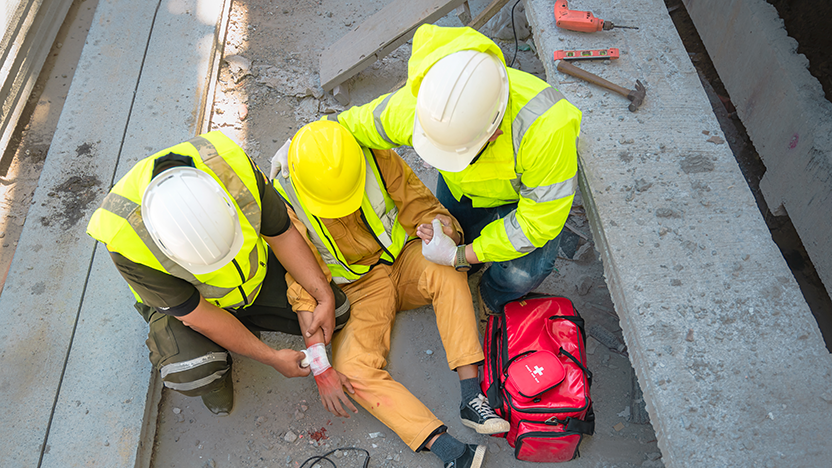
Personal Injury
How asbestos in schools can impact your child’s health
It is reported that around 80% of state school buildings in England could still contain asbestos. Here, we take a look at the risk asbestos in schools presents, and the effects of asbestos exposure on children and staff members if it is not handled correctly.
The risks that asbestos poses have been widely commented upon in recent years, and it is now generally understood and accepted that exposure to even low levels of asbestos dust and fibre can present potentially lethal danger.
Yet, the exact degree of danger asbestos can present is often misunderstood, or entirely unknown, by those working within or attending schools where asbestos is present. What’s more, despite asbestos being heavily adopted in school buildings, the impact that asbestos has on children is not effectively tracked in the UK.
In 2011’s landmark ruling, the Supreme Court accepted that Dianne Willmore died as a result of mesothelioma as a direct result of her exposure to asbestos while she attended Bowring Comprehensive School in Liverpool in the 1970s. This case highlighted the reality that children exposed to asbestos in a school setting do go on to develop mesothelioma.
Is asbestos still present in schools today?
From around the late 1800s, asbestos was used extensively in diverse ways, including a variety of commercially produced goods and products. It wasn’t until the 1950s in the wake of the Second World War, however, that its use became extremely widespread.
Asbestos would remain a staple in the construction of buildings, including schools and other public buildings, until the 1990s. It was finally banned in 1999, as the government finally sought to recognise the danger the substance posed, despite it being known since the 1960s that exposure to even low levels of asbestos dust could cause the fatal cancer mesothelioma.
However, there was never any attempt to systematically remove asbestos from the buildings where it had been used before the ban, meaning that as of 2023 as many as 80% of state schools in England in England still had asbestos present in their estate, in a variety of products and often in unpredictable and accessible locations.
What is the risk of asbestos in schools?
If left alone and undisturbed, asbestos is not thought to present any significant risk of harm. It is only when the fibres of the material become airborne and are then inhaled that it can cause damage. However, asbestos products degrade over time and fibres often become airborne, even in circumstances where there has been no intentional contact or disturbance, meaning all who access buildings where asbestos is present are at risk of inhaling this deadly dust.
Despite this very real and current danger, research carried out by Slater and Gordon has found that approximately a quarter of those who work in education have no understanding of what asbestos is, and 13% are unaware that exposure to asbestos can lead to health issues.
This presents a worrying issue. If those working in school buildings are unaware of the danger asbestos can pose, what chance do the children attending school in those same buildings have of understanding the risks posed by asbestos exposure?
In 2024, Dr Gill Reed, former technical adviser to the Joint Union Asbestos Committee, performed an extensive investigation into the dangers of asbestos in schools. Her findings indicated that hundreds of thousands of students and staff exposed to asbestos in schools since the mid-1990s are predicted to die in future from mesothelioma.
Furthermore, it is estimated that tens of thousands of school staff and students have already passed away from mesothelioma due to asbestos exposure before the mid-1990s. Crucially, while most of the victims were children when they were first exposed at school (a trend predicted to continue among future victims), the cause of their mesothelioma is likely to be attributed to their last occupation, concealing the true origin of their illness.
What is the effect of asbestos exposure on children?
One of the key challenges in identifying the effects of asbestos exposure on children is that there are almost never any immediate signs of illness. Asbestos-related illnesses, including mesothelioma, have a long latency period, which means first symptoms typically do not present for anywhere between 20 to 40 years after exposure.
For instance, asbestosis typically presents at least 10 years after the initial exposure, though it is common for this to be even longer (between 30 and 40 years).
This means that while children can unknowingly be exposed to potentially lethal amounts of asbestos fibre, it can be impossible to know how much damage has been caused until symptoms materialise sometimes decades later.
Currently, data on the development of asbestos-related illnesses triggered during adolescents is not tracked by the Office for National Statistics. This makes it difficult to know just how many adults who have been diagnosed with asbestos-related illnesses, such as asbestosis or mesothelioma, may have developed the illnesses due to exposure during their time at school.
This continues, despite a publication by the Department for Education stating ten years ago that “[exposure] of children to asbestos is likely to render them more vulnerable to developing mesothelioma than exposure of adults to the equivalent asbestos dose” – indicating an awareness that asbestos poses a higher risk of complications for children than it does for adults working in the same environment.
What’s more, in 2012, Professor Julian Peto, a leading expert in asbestos-related cancers in the UK, estimated to a parliamentary select committee that between 200 and 300 adults who attended school in the 1960s and 70s would die each year as a result of exposure to asbestos.
What does the RAAC scandal mean for asbestos in schools?
Reinforced Autoclaved Aerated Concrete (RAAC) was a lightweight alternative to standard concrete. It was cheaper, quicker to produce and easier to install, and was used in construction between the 1950s and 1990s.
As it is aerated, RAAC is a porous material, making it susceptible to structural failure when exposed to moisture. Due to its weaknesses compared to traditional concrete, it also has a much shorter lifespan – with the Health and Safety Executive stating that much of the RAAC used is now beyond its lifespan and liable to collapse with little or no warning.
In September 2023, the government disclosed the safety risk in schools and colleges regarding RAAC. They claimed the estates of 174 schools and colleges in England had been found to include RAAC, with some mitigation work to minimise risk already underway. The government also committed £1.8 billion in capital funding to “support schools to stay in good working order”, with further funding being made available to rebuild 500 schools before 2033.
The following year, the government updated the list to include 234 schools and colleges.
However, in January 2025, The independent found that 90% of schools have not had RAAC removed. In real terms, this means work had been completed in just 30 schools across England and Wales. It was said in parliament that it could take three to five years to complete the rebuilding programme. While the issue of RAAC is concerning enough, it is important to understand what this could mean for school buildings that still contain asbestos. The risk of structural failure in RAAC can mean an increased risk of disturbing asbestos fibres, and any work that has to be done to remove or reinforce RAAC must also consider the presence and potential for disturbance of any asbestos.
Asbestos in schools: The danger of unmaintained buildings
Schools that contain RAAC beyond its lifespan are a prime example of how unmaintained buildings pose risks to students and staff alike. Beyond the obvious potential for injury due to structural collapse, such incidents will inevitably disturb any asbestos that was used during construction, leading to an unacceptable risk of exposure.
The government issued grants to support schools effected by expired RAAC to help rebuild, however there has been no commitment to provide any furtherfunding to help with other issues they may encounter during renovations, such as asbestos. To avoid being disturbed in a dangerous manner, asbestos must be handled by professionals who have been trained specifically and have specialist equipment, which will incur additional charges.
Dr Gill Reed shared with The Guardian, “I calculated that (at 2004 prices) £10m should be set aside annually for the planned replacement of the school stock over a rolling 60-year period, £4.5m for capitalised planned maintenance, £3m for curriculum developments requiring alteration and modernisation, and £2.5m for unpredictables stemming from government initiatives – health and safety legislation, removal of reinforced autoclaved aerated concrete, asbestos, disabled access – the list goes on.
This would stabilise the situation in the school stock, but only after a one-off expenditure of about £12m to catch up with the backlog.”
This proposed financial plan was done more than 20 years ago and only focused on asbestos in schools, not other issues such as RAAC, and the cost at the time appears staggering. In the time since this was calculated, there will have been much more deterioration in school buildings – not to mention the cost-of-living crisis and the government’s significant debt record – meaning the cost to modernise and make school buildings safe again will have only increased at a time when funding the work will be more of a challenge.
Yet it remains crucial that the government make a large and committed effort to modernising school buildings for the safety of students and staff. The longer asbestos is left in schools, the higher the risk to those who frequent them, and the more expensive it will be to fix as the issues will persist as these buildings continue to deteriorate.
What should I do if I'm concerned about asbestos in my child's school?
If you are concerned asbestos may be present in your child’s school, it can be a good idea to talk through your concerns with the school. While they don’t have a legal obligation to inform you of the presence of asbestos in their estate, duty holders are obligated to manage asbestos safely, including identifying where it has been used, and assessing and controlling risks.
In schools, the duty holder is the person or body responsible for managing anything related to asbestos. This could be the local authority, academy trust, or school governors, depending on the school type. They must also ensure that anyone who might disturb asbestos is informed and trained.
If you still have concerns after talking to the school's duty holders, you can also contact the Health and Safety Executive (HSE). The HSE will send an acknowledgment of your complaint, usually within five working days, and provide a reference number. They will then assess the severity of the issue and urgency, prioritising cases involving immediate danger or serious health risks. During this assessment, they contact you for more information, including any evidence you may have. The HSE will communicate the outcome of their investigation to you, usually within 15 working days.
For more information, you can visit the Health and Safety Executive’s website, or check out their Asbestos Management for Schools checklist here.
How Slater and Gordon are supporting those affected by asbestos-related illness
Our dedicated industrial disease team offers legal advice and support to those who have suffered due to asbestos exposure, at any stage of their illness. One of our clients, former pottery teacher John Slade, was given just one year to live after his diagnosis of mesothelioma when he contacted Slater and Gordon.
After suffering from headaches and tiredness since the 1990s and attending multiple GP and private doctors' appointments (including brain scans) with no resolution, John was finally diagnosed with mesothelioma with just one year to live.
It was subsequently discovered that the building John had taught pottery in at Richard Taunton College during the 70s – and the gloves he had frequently used to unload the kiln – had contained asbestos, resulting in his diagnosis of mesothelioma decades later. Wishing to secure his wife compensation and hold the people responsible to account for the danger they put staff in, John approached our leading asbestos solicitors pursue legal action against his former employers on his behalf.
You can learn more about John’s story here.
Living with an asbestos-related condition can be challenging for you and your family, and it’s only right that you receive the support you need to be able to do so in as much comfort as possible. That is why our specialist asbestos claims team is on hand to help you gain the compensation you deserve.
With decades of experience helping people access the support they need, our legal experts are all well-versed in cases dealing with asbestos-related illnesses and work tirelessly to aid those struggling. We have partnered with numerous charities across the UK to support those affected by asbestos-related illnesses, from asbestosis to mesothelioma. You can find out more about these charities, and how to get in touch with them, here.
To learn more or to find out how we can help you, get in touch with the team online or call on 0330 041 5869.



